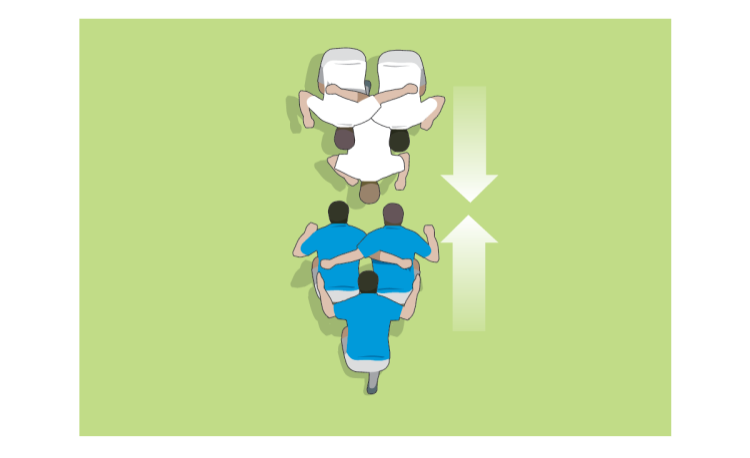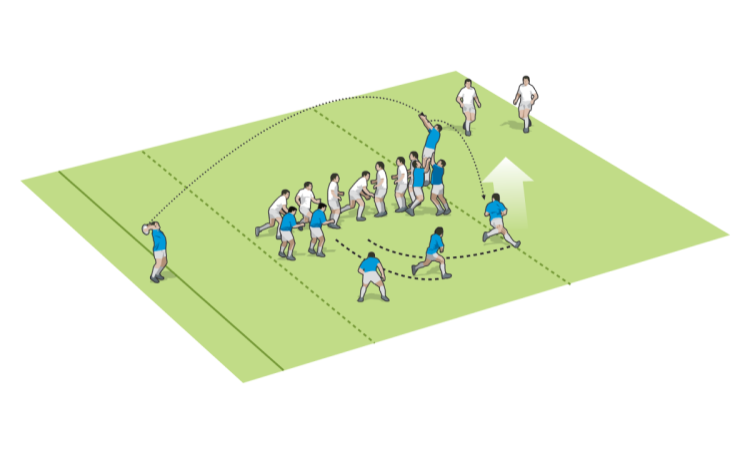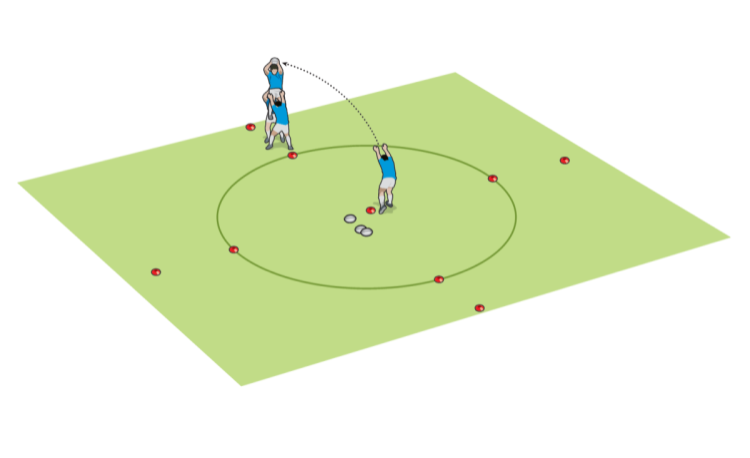You are viewing
1 of your 2 free articles
In-season scrum warm ups
Scrums & Lineoutsby George Chuter
We don’t get much time to work on set-pieces in a normal training week, so we need to maximise what we do to get the most from our players. Here’s a good warm up.
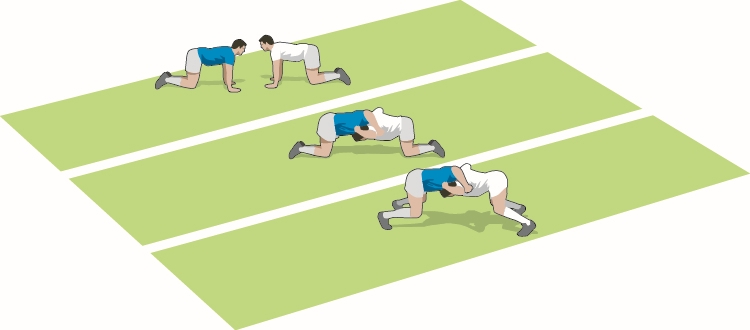
The players will start on their knees and then, as they warm up further, move to their feet. I expect the back five in the scrum to be doing this as much as the front row.
It’s not a wrestling match. The players are practising getting control of their profile, able to move up and down against each other. I am looking for the players to lean into each other and that means pushing forward, with their knees moving forward, pushing the chest down. I don’t want the players squatting.
As they are doing this, I am moving around the group, checking their body profiles and making small adjustments. I will often push my fingers into the small of the back or in between their shoulder blades (scaps). I want their back hollow and their scaps pinching together.
I will also be checking their legs, that they are able to move forward and not straight. This warm up lasts only five minutes and I expect the players to change shoulders.
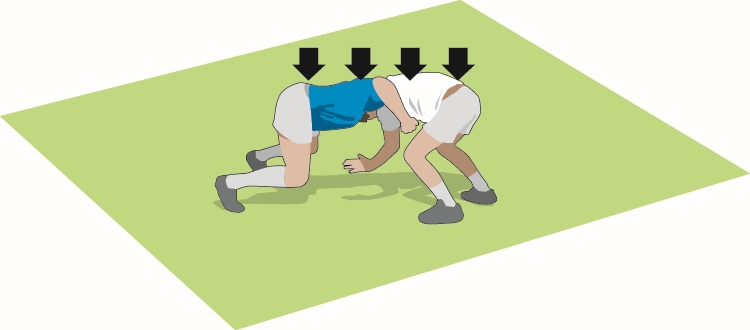
The next five minutes, we will work in groups of three. It will be a two v one, where the one binds between the two. It is easier for the one to retain his shape.
The one sinks and then chases his feet. This means he takes small steps forward as he drives. The two players resisting have to let themselves be pushed.
I like the players use a cadence call such as “down, squeeze, 2, 3”. This helps trigger the right movements and when we are scrummaging as an eight, it will coordinate the movement together.
Depending on the number of players at training, we will move to 3 v 3 or 5 v 5 scrums. In all cases, we aren’t interested in the strike or much of a shove.
This means we can mix players around and use players of different abilities to work on the principles we were using in the 1 v 1 and 2 v 1 situations.
ONE v ONES

- Start the warm up with two players on their knees.
- It isn’t a wrestling match – just looking for good profiles.
- When they are on their feet, look for their chest pushing down and knees moving forward.
The players will start on their knees and then, as they warm up further, move to their feet. I expect the back five in the scrum to be doing this as much as the front row.
It’s not a wrestling match. The players are practising getting control of their profile, able to move up and down against each other. I am looking for the players to lean into each other and that means pushing forward, with their knees moving forward, pushing the chest down. I don’t want the players squatting.
As they are doing this, I am moving around the group, checking their body profiles and making small adjustments. I will often push my fingers into the small of the back or in between their shoulder blades (scaps). I want their back hollow and their scaps pinching together.
I will also be checking their legs, that they are able to move forward and not straight. This warm up lasts only five minutes and I expect the players to change shoulders.
CHECKLIST

- Small of the back - is it hollow?
- Shoulders blades - are they pinching together?
- Legs - are knees under the hips?
TWO v ONES
The next five minutes, we will work in groups of three. It will be a two v one, where the one binds between the two. It is easier for the one to retain his shape.
The one sinks and then chases his feet. This means he takes small steps forward as he drives. The two players resisting have to let themselves be pushed.
I like the players use a cadence call such as “down, squeeze, 2, 3”. This helps trigger the right movements and when we are scrummaging as an eight, it will coordinate the movement together.
EXTENSION to 3 v 3 or 5 v 5
Depending on the number of players at training, we will move to 3 v 3 or 5 v 5 scrums. In all cases, we aren’t interested in the strike or much of a shove.
This means we can mix players around and use players of different abilities to work on the principles we were using in the 1 v 1 and 2 v 1 situations.
Related Files
in-season-scrum-warm-ups.pdfPDF, 329 KB
Newsletter Sign Up
Coaches Testimonials

Gerald Kearney, Downtown Las Vegas Soccer Club

Paul Butler, Florida, USA

Rick Shields, Springboro, USA

Tony Green, Pierrefonds Titans, Quebec, Canada
Subscribe Today
Be a more effective, more successful rugby coach
In a recent survey 89% of subscribers said Rugby Coach Weekly makes them more confident, 91% said Rugby Coach Weekly makes them a more effective coach and 93% said Rugby Coach Weekly makes them more inspired.
Get Weekly Inspiration
All the latest techniques and approaches
Rugby Coach Weekly offers proven and easy to use rugby drills, coaching sessions, practice plans, small-sided games, warm-ups, training tips and advice.
We've been at the cutting edge of rugby coaching since we launched in 2005, creating resources for the grassroots youth coach, following best practice from around the world and insights from the professional game.
More from us
© 2023 Rugby Coach Weekly
Part of Green Star Media Ltd. Company number: 3008779
We use cookies so we can provide you with the best online experience. By continuing to browse this site you are agreeing to our use of cookies. Click on the banner to find out more.



